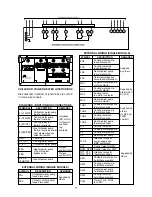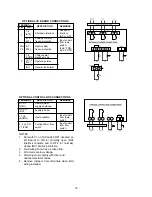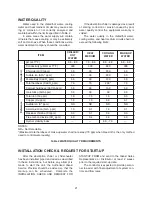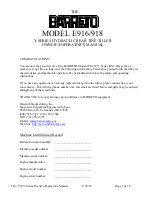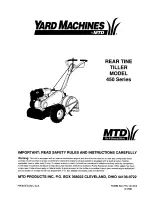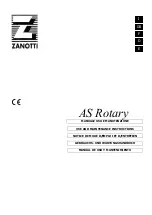
Whenever the absorption chiller or the
chilled/hot water piping is installed outdoors and
subject to ambient temperatures below freezing,
the circuit should be filled with a glycol solution of
adequate concentration to prevent freezing. It is
important that the glycol solution contain
inhibitors to protect the copper tubes in the
absorption chiller from corrosion. If glycol is not
used for freeze protection, install a temperature
limit switch in the lowest outdoor section of the
HEAT MEDIUM PIPING
The heat medium piping contains water which
must be pressurized, as shown in Fig. 8, by either
an open cistern or closed expansion tank. Install
piping with a rising grade of 1/200 and install man-
ual vent valves at high points to expel trapped air.
A balancing valve should be installed adja-
cent to the heat medium outlet on each unit to
facilitate flow rate adjustments within specified
limits. Install a stop valve adjacent to the heat
medium inlet on each chiller. This valve must be in
the full open position when the equipment is
operating. DO NOT CLOSE the stop valve except
for disconnection or relocation of the machine.
Insulate piping AFTER LEAK TESTING to
prevent heat loss and ensure that all stop valves,
balancing valves and thermowells are accessible.
Whenever the absorption chiller or the heat
medium piping is installed outdoors and subject
to ambient temperatures below freezing, the
chilled/hot water pipe and interlock the switch with
the absorption chiller controls (refer to Optional
Field Wiring Connections).
circuit should be filled with a glycol solution of
adequate concentration to prevent freezing. It is
important that the glycol solution contain
inhibitors to protect the stainless steel tubes in
the absorption chiller from corrosion. If glycol is
not used for freeze protection, install a
temperature limit switch in the lowest outdoor
section of the heat medium pipe and interlock the
switch with the absorption chiller controls (refer to
Optional Field Wiring Connections).
Install a motorized 3-way bypass valve (HMV)
with limit switches to control the heat input to the
absorption chiller.
Fig. 8 HEAT MEDIUM PIPING
13
CAUTION
1. DO NOT EXCEED 80 - 120% OF
STANDARD CHILLED/HOT WATER FLOW.
2. DO NOT EXCEED 85.3 PSI IN THE
CHILLED/HOT WATER CIRCUIT AT THE
ABSORPTION CHILLER.
3. DO NOT INSTALL ANY VALVES IN THE
EXPANSION LINE.
CAUTION
1. DO NOT EXCEED 30 - 120% OF
STANDARD HEAT MEDIUM FLOW.
2. DO NOT EXCEED 85.3 PSI IN THE
HEAT MEDIUM CIRCUIT AT THE
ABSORPTION CHILLER.
3. DO NOT INSTALL ANY VALVES IN THE
EXPANSION LINE.
Heat Medium
Outlet
Heat Medium
Inlet
T
Drain
IF3 Switch (Optional)
Heat Medium Pump
Air Vent
Chiller/Chiller - Heater
T
Water Make-Up/
Expansion Line
Check/Reducing Valve
Expansion Tank
Relief Valve
Water Supply
Heat Medium Bypass Valve (HMV)
P
P
Fig. 7 CHILLED/HOT WATER PIPING
T
T
Chilled/Hot Water Pump
IF1 Switch (Optional)
Air Vent
Drain
Water Supply
Check/Reducing Valve
Expansion Tank
Relief Valve
Water Make-Up/
Expansion Line
Chilled/Hot Water
Outlet
Chilled/Hot Water
Inlet
Chiller/Chiller - Heater
P
P

















